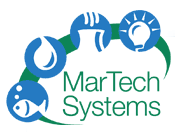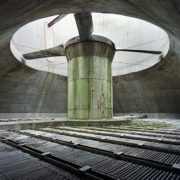Finally – New Technologies to Effectively Measure and Control Legionella in Cooling Towers
ASHRAE’s Standard 188, “Legionellosis: Risk Management for Building Water Systems” codifies a systematic process to assess and control the risk of Legionella pneumophila in evaporative comfort-cooling water systems. This systematic process specifies a framework of consistent action, assessment and re-assessment of the effectiveness of water treatment, routine monitoring, preventative maintenance, and water quality during service and idle periods. Five years after the publication of ASHRAE Standard 188, cooling towers – even cooling towers in New York State and New York City with mandatory legionella testing and reporting – continue to be a source of Legionnaires’ Disease (LD).
Why is it so difficult to prevent LD infections from cooling towers?
Because owners and operators lack key technologies to effectively measure and control the risk of legionella in cooling towers.
The viability of bacteria, including legionella bacteria, depends on poorly-monitored and/or poorly-controlled independent variables, including concentrations of nutrients (e. g. airborne contaminants and water treatment chemicals), environmental conditions (e. g. ambient temperature, humidity, cloud-cover, precipitation), process heat load (e. g. chiller utilization), and duty cycle (e. g. continuous or intermittent recirculation of cooling water). Based on these independent variables, the concentration of bacteria, including legionella bacteria, can exceed the maximum safe concentration in several hours because bacteria populations increase exponentially over time. The delays for results from field tests: paddle tests (2-3 days), and Biological Activity Reaction Test (BART) biodetectors, (2-7 days), and from laboratory tests: heterotrophic aerobic bacteria cultures (3 days), and legionella pneumophila cultures (7-14 days), prevent timely corrective action, i. e., feeding biocides. These delays for test results also prevent validation – confirming that the dosage and selection of biocides were correct.
Risk management for Legionellosis requires effective control of sessile organisms because legionella bacteria require a host such as an amoeba or a protozoon to reproduce. The conventional method to control sessile bacteria is to feed non-oxidizing biocides. The conventional method to control planktonic bacteria is to feed an oxidizing biocide: sodium hypochlorite (“bleach”) or a combination of a bromine product and bleach. Non-oxidizing are extremely toxic, while oxidizing biocides are moderately toxic. Application of all biocides requires personal protective equipment to eliminate skin or respiratory exposure during change-out of empty drums, repair of the chemical feed pump or manual feed activities.
What technologies are missing?
Two technologies that – implemented together – will optimize the process to control bacteria: real-time, accurate measurements of bacteria, including legionella pneumophila, and robust control of the dosage of “greener” biocides.
There are two real-time field tests for bacteria that provide results within an hour: Adenosine Tri-Phosphate (ATP) and quantitative Polymerase Chain Reaction (qPCR). ATP, an energy-carrying compound present in all cells, provides a semi-quantitative test result for the concentration of DNA in the water sample. The accuracy of this test method rests on a reasonable assumption that the vast majority of DNA is associated with live or non-viable bacteria. The ATP test cannot differentiate species of bacteria or provide a strict correlation to the concentration of bacteria. North American suppliers of ATP field test devices include hygenia and Luminultra. The qPCR test can differentiate bacteria species and sero groups; the most common application for qPCR is measurement of legionella pneumophila bacteria, sero group 1 (the most common species that causes Legionnaires’ Disease). North American suppliers of qPCR field test devices include Spartan Bioscience, BIO-RAD, Pall and Luminultra.
There are several options to obtain a “greener” biocide application:
- Select alternative technologies that do not require chemicals
- Select chemicals that have lower toxicity that reduce human exposure
- Provide chemical feed systems that minimize human exposure
What is the current status of these technologies?
Researchers have completed an extremely successful laboratory study of a full-scale device, Plasma Disinfection System (PDS) on a model evaporative cooling water system that used an on-site Legionella qPCR rapid-test device and an innovative bacterial control system to control the population of Legionella bacteria. The Association of Water Technologists (AWT) published a peer-reviewed article in the August 2021 edition of AWT’s trade journal, “The Analyst,” “Can Online qPCR Testing Improve Management of Legionella Infections from Cooling Towers?” The author of this article will present the results of this study at the 2021 AWT Annual Conference in Providence, Rhode Island, on Saturday, September 24th at 10:45 am. A follow-on field trial in a cooling tower serving a corporate campus is currently in progress.
This laboratory study documented the value of the Spartan Bioscience qPCR test results to promptly assess the risk of Legionella bacteria by comparing the qPCR test results to the results of a modified culture test and confirming the efficacy of the innovative bacterial control system to control planktonic and sessile bacteria.
This laboratory study also documented the mechanism of action for each of these “greener” biocide applications:
- Non-thermal atmospheric plasma generation reduced the population of both heterotrophic aerobic bacteria and gram negative bacteria, generally associated with the population of sessile bacteria
- On-line, in situ impressed copper anode and impressed silver anode reduced the population of legionella bacteria and dramatically reduced the population of gram negative bacteria, generally associated with the population of sessile bacteria
- Mixing to create an on-line, in situ reaction and oxidizing biocide, hypobromous acid dramatically reduced the population of legionella bacteria and gram negative bacteria, generally associated with the population of sessile bacteria
The key benefits from controlling the population of sessile bacteria and the associated biofilm are improving the heat transfer, reducing the rate of proliferation of Legionella, and minimizing the adaptive ability of bacteria by using multiple biocidal technologies. By using a novel, sophisticated on-site Legionella qPCR test device, owners of cooling towers can quickly measure the Legionella population and proactively optimize bacteria control by making real-time adjustments in the PDS.
Want more information about managing the risks in your cooling tower or in your building’s water systems? We’re here to help. Call us (609-865-8151), send us an email (huchler@martechsystems.com), or visit our website https://www.martechsystems.com/.
P. S. Don’t forget to subscribe to our blog (https://www.martechsystems.com/water-talk/).


